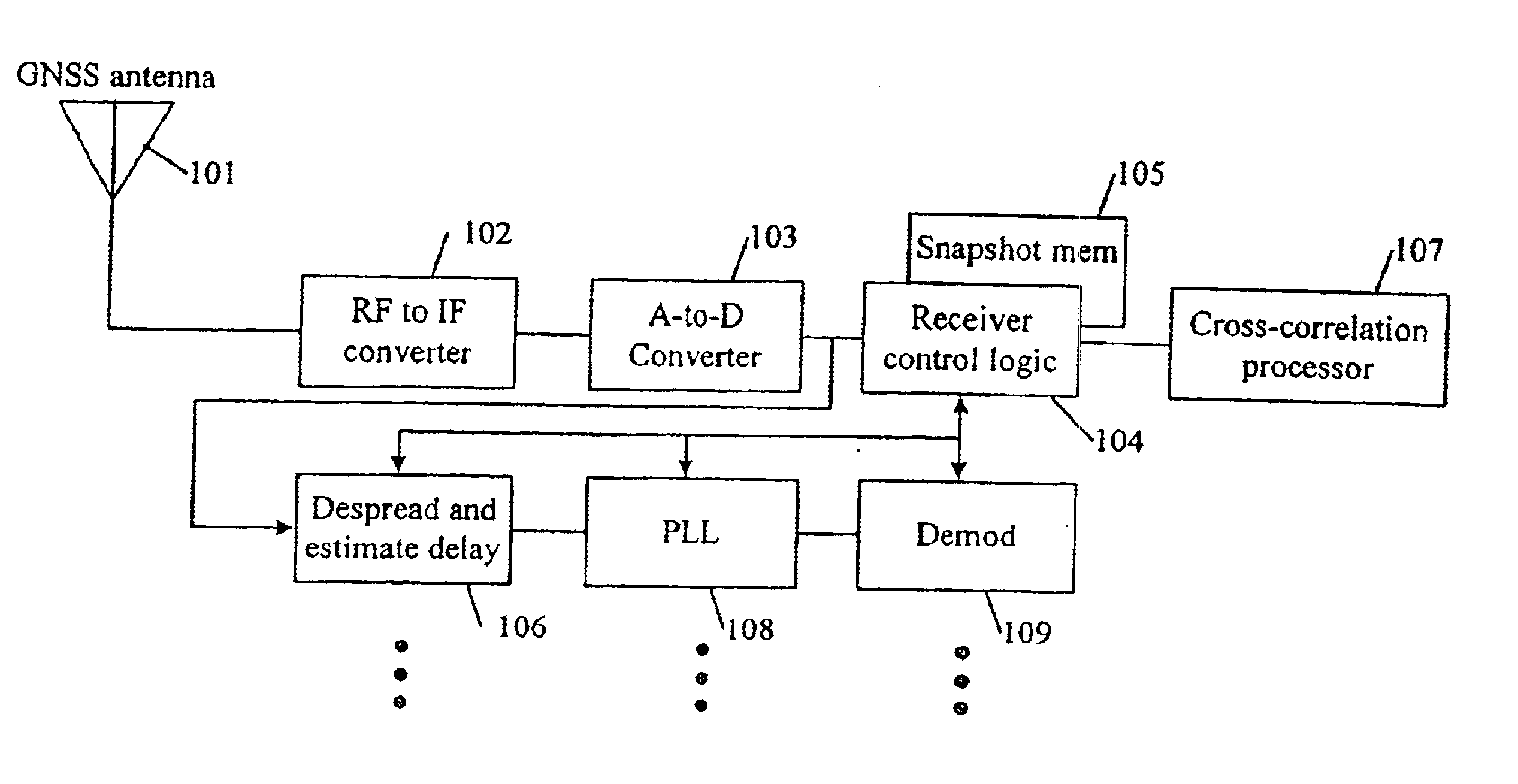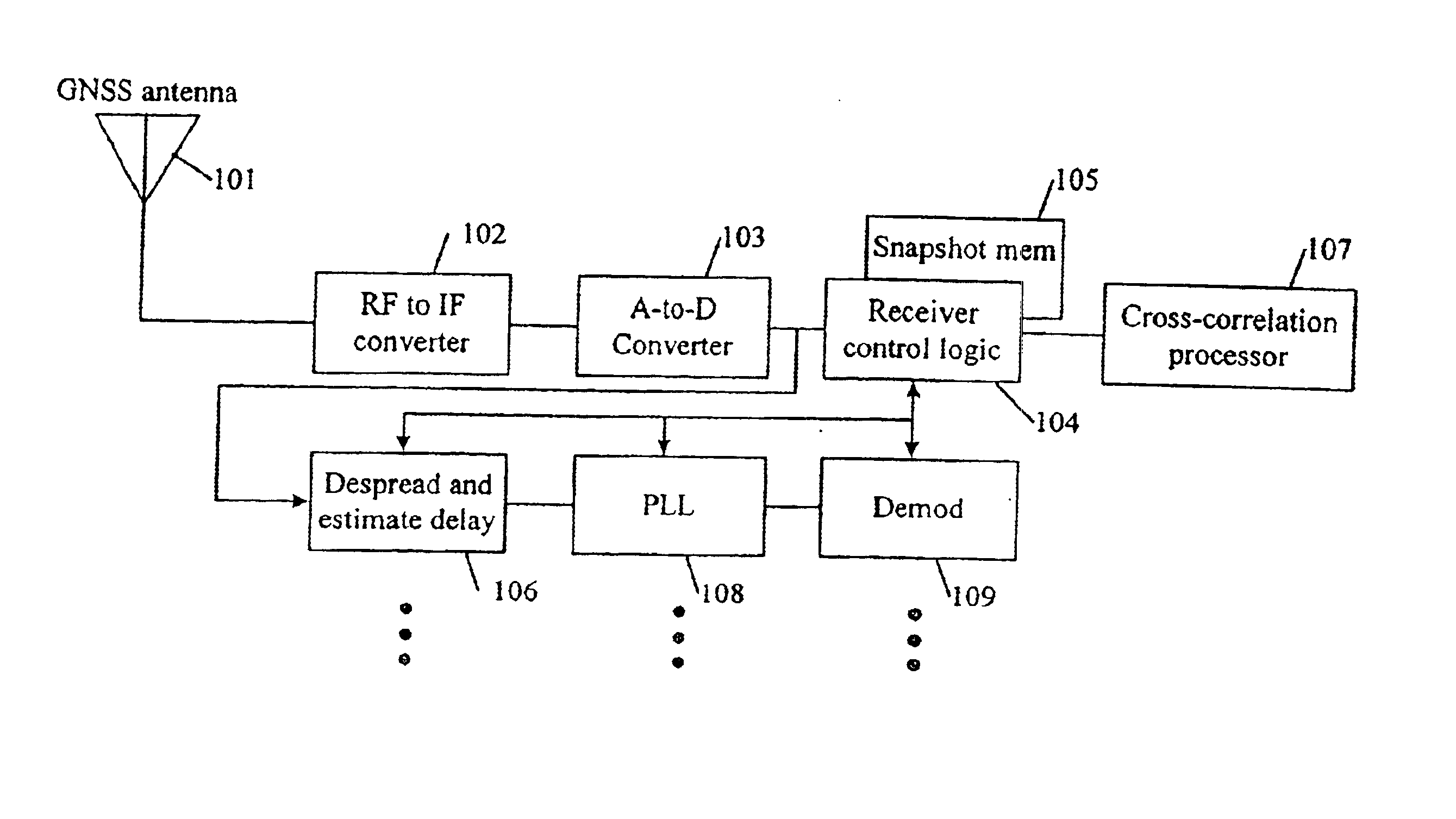Enhanced GNSS receiver
a receiver and receiver technology, applied in multi-channel direction-finding systems using radio waves, instruments, measurement devices, etc., to achieve the effect of minimal support and robust performan
- Summary
- Abstract
- Description
- Claims
- Application Information
AI Technical Summary
Benefits of technology
Problems solved by technology
Method used
Image
Examples
Embodiment Construction
The FIGURE illustrates a preferred embodiment of the present invention. Signals from the GNSS ranging sources, modulated with navigation data, are received by a GNSS antenna 101, passed to an RF-to-IF converter 102, and digitized by an analog-to-digital converter 103. The digitized samples are passed to the receiver control logic 104 where selected epochs of said samples may be stored in snapshot memory 105, and also passed to a despreader and delay estimator 106. The cross-correlation processor 107 operates on a selected epoch of the digitized samples stored in snapshot memory 105, under the control of the receiver control logic 104, and determines the one or several correlation peaks associated with each ranging signal present at the receiver input. Typically there will be multiple correlation peaks identified. Only the first correlation peak is intended to be used in a navigation solution, although the first correlation peak may not be the strongest of the several peaks identifie...
PUM
 Login to View More
Login to View More Abstract
Description
Claims
Application Information
 Login to View More
Login to View More - R&D
- Intellectual Property
- Life Sciences
- Materials
- Tech Scout
- Unparalleled Data Quality
- Higher Quality Content
- 60% Fewer Hallucinations
Browse by: Latest US Patents, China's latest patents, Technical Efficacy Thesaurus, Application Domain, Technology Topic, Popular Technical Reports.
© 2025 PatSnap. All rights reserved.Legal|Privacy policy|Modern Slavery Act Transparency Statement|Sitemap|About US| Contact US: help@patsnap.com


